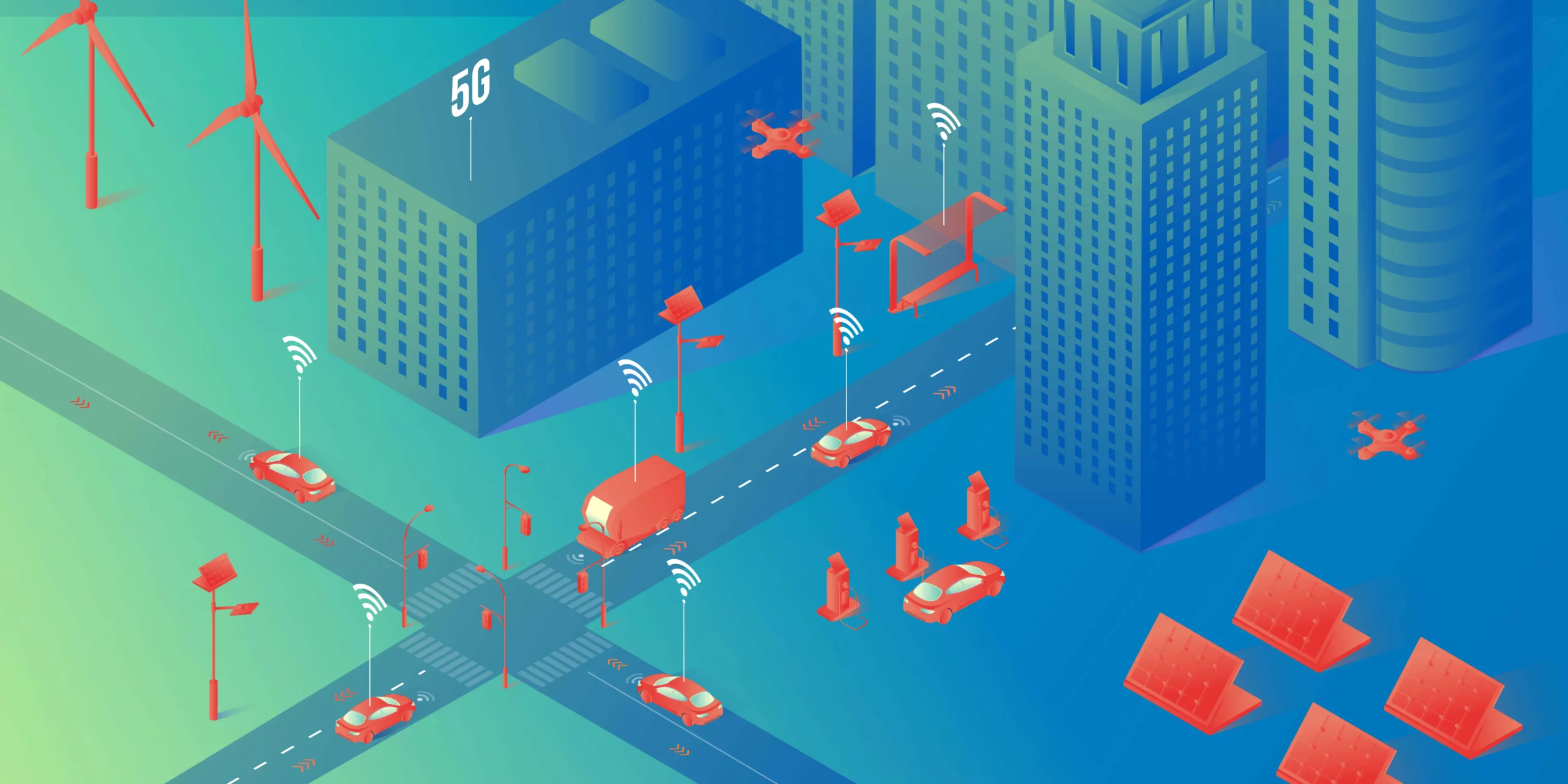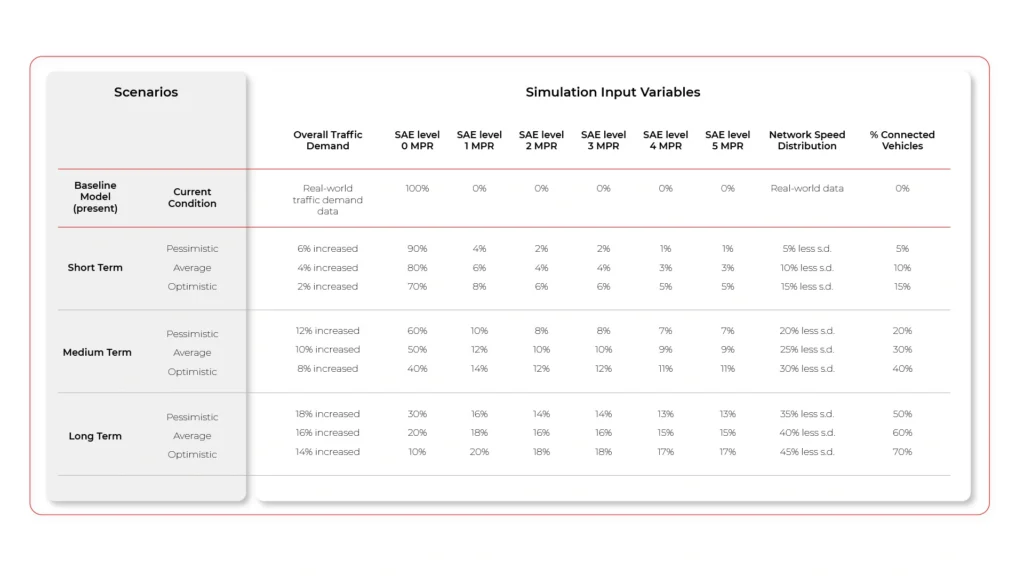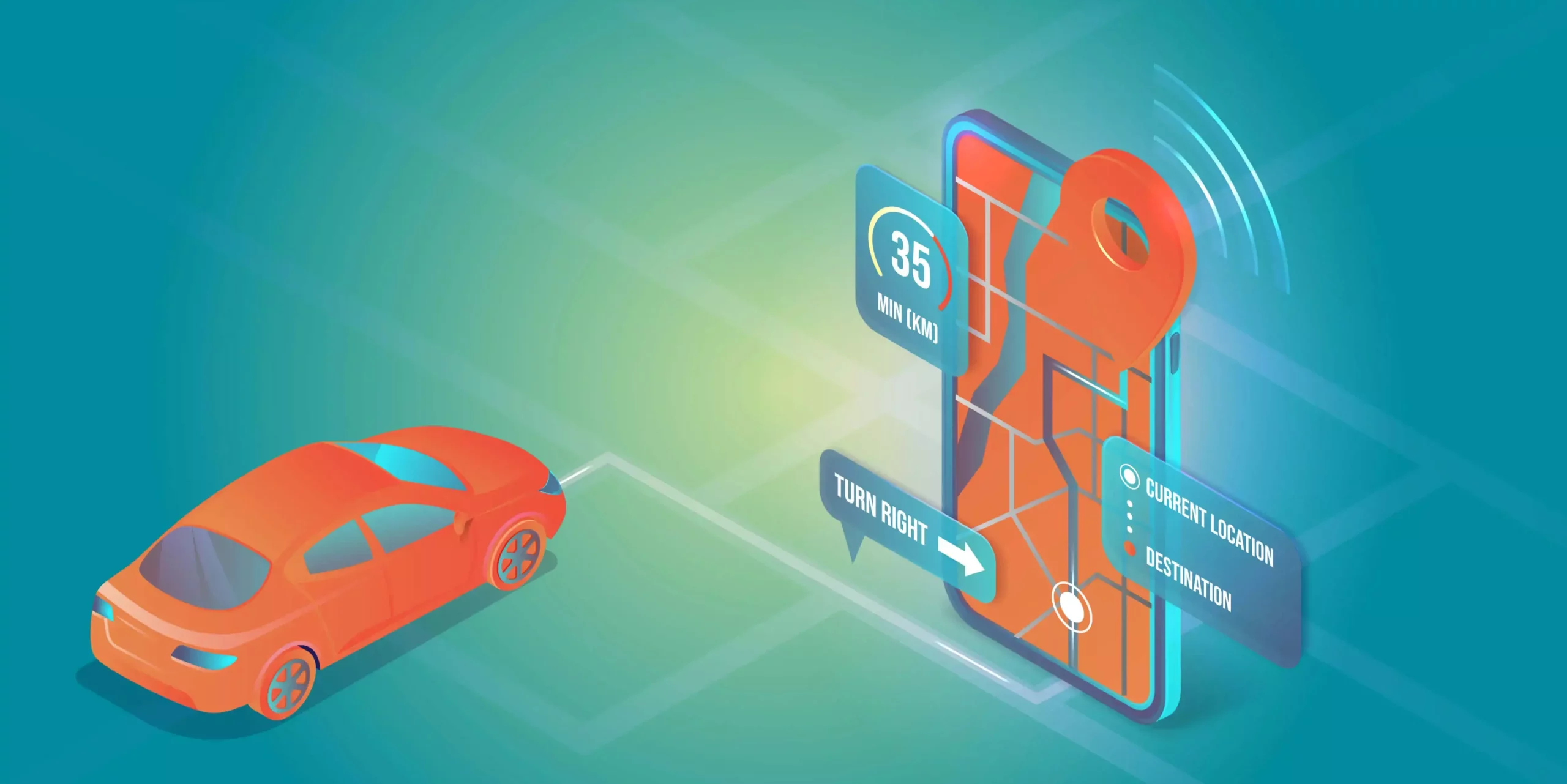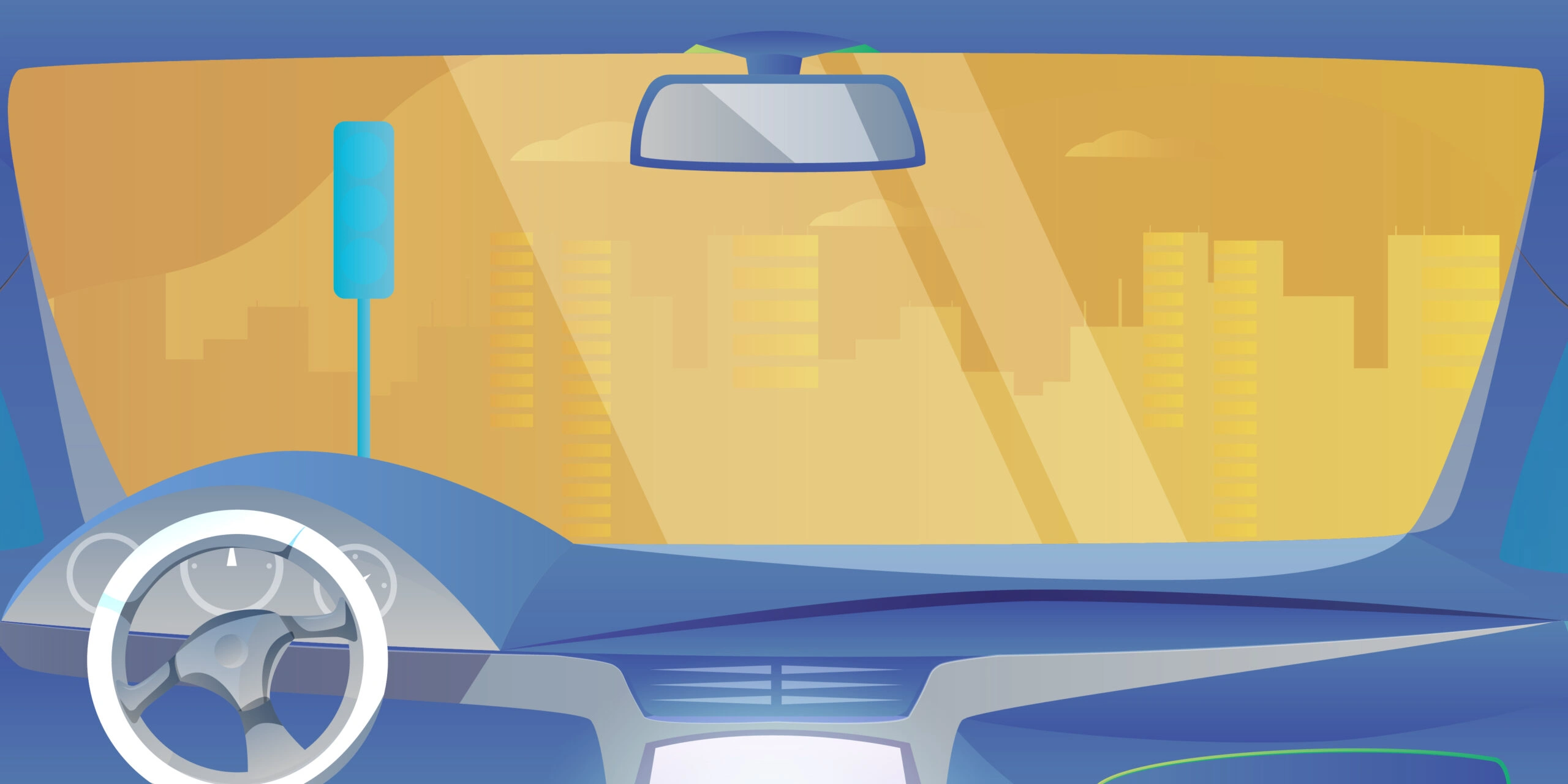Predictive Transport Model and Automotive. How Can Smart Cities Use Data from Connected Vehicles?

There are many indications that the future lies in technology. Specifically, it belongs to connected and autonomous vehicles(CAVs), which, combined with 5G, AI, and machine learning, will form the backbone of the smart cities of the future. How will data from vehicles revolutionize city life as we’ve known it so far?
Data is “fuel” for the modern, smart cities
The UN estimates that by 2050, about 68 percent of the global population will live in urban areas. This raises challenges that we are already trying to address as a society.
Technology will significantly support connected, secure, and intelligent vehicle communication using vehicle-to-vehicle (V2V), vehicle-to-infrastructure (V2I), and vehicle-to-everything (V2X) protocols. All of this is intended to promote better management of city transport, fewer delays, and environmental protection.
This is not just empty talk, because in the next few years 75% of all cars will be connected to the internet, generating massive amounts of data. One could even say that data will be a kind of “fuel” for mobility in the modern city. It is worth tapping into this potential. There is much to suggest that cities and municipalities will find that such innovative traffic management, routing, and congestion reduction will translate into better accessibility and increased safety. In this way, many potential crises related to overpopulation and excess of cars in agglomerations will be counteracted.
What can smart cities use connected car data for?
Traffic estimation and prediction systems
Data from connected cars, in conjunction with Internet of Things (IoT) sensor networks, will help forecast traffic volumes. Alerts about traffic congestion and road conditions can also be released based on this.

Parking and signalization management
High-Performance Computing and high-speed transmission platforms with industrial AI /5G/edge computing technologies help, among other things, to efficiently control traffic lights and identify parking spaces, reducing the vehicle’s circling time in search of a space and fuel being wasted.
Responding to accidents and collisions
Real-time processed data can also be used to save the lives and health of city traffic users. Based on data from connected cars, accident detection systems can determine what action needs to be taken (repair, call an ambulance, block traffic). In addition, GPS coordinates can be sent immediately to emergency services, without delays or telephone miscommunication.
Such solutions are already being used by European warning systems, with the recently launched eCall system being one example. It works in vehicles across the EU and, in the case of a serious accident, will automatically connect to the nearest emergency network, allowing data (e.g. exact location, time of the accident, vehicle registration number, and direction of travel) to be transmitted, and then dial the free 112 emergency number. This enables the emergency services to assess the situation and take appropriate action. In case of eCall failure, a warning is displayed.
Reducing emissions
Less or more sustainable car traffic equals less harmful emissions into the atmosphere. Besides, data-driven simulations enable short- and long-term planning, which is essential for low-carbon strategies.
Improved throughput and reduced travel time
Research clearly shows that connected and automated vehicles add to the comfort of driving. The more such cars on the streets, the better the road capacity on highways.
As this happens, the travel time also decreases. By a specific amount, about 17-20 percent. No congestion means that fewer minutes have to be spent in traffic jams. Of course, this generates savings (less fuel consumption), and also for the environment (lower emissions).
Traffic management (case studies: Hangzhou and Tallinn)
Intelligent traffic management systems (ITS) today benefit from AI. This is apparent in the Chinese city of Hangzhou, which prior to the technology-transportation revolution ranked fifth among the most congested cities in the Middle Kingdom.
Data from connected vehicles there helps to efficiently manage traffic and reduce congestion in the city’s most vulnerable districts. They also notify local authorities of traffic violations, such as running red lights. All this without investing in costly municipal infrastructure over a large area. Plus, built-in vehicle telematics requires no maintenance, which also reduces operating costs.
A similar model was compiled in Estonia by Tallinn Transport Authority in conjunction with German software company PTV Group. A continuously updated map illustrates, among other things, the road network and traffic frequency in the city.
Predictive maintenance in public transport
Estimated downtime costs for high-utilization fleets, such as buses and trucks, range from $448 to $760 daily. Just realize the problem of one bus breaking down in a city. All of a sudden, you find that delays affect not just one line, but many. Chaos is created and there are stoppages.
Fortunately, with the trend to equip more and more vehicles with telematics systems, predictive maintenance will be easier to implement. This will significantly increase the usability and safety of networked buses. Meanwhile, maintenance time and costs will drop.

Creating smart cities that are ahead of their time
Connected vehicle data not only make smart cities much smarter, but when leveraged for real-time safety, emergency planning, and reducing congestion, it saves countless lives and enables a better, cleaner urban experience – said Ben Wolkow, CEO of Otonomo.
The digitization of the automotive sector is accelerating the trend of smart and automated city traffic management. A digital transport model can forecast and analyze the city’s mobility needs to improve urban planning.
If you wish to see how data-defined automotive technologies can enhance the comfort of living in a modern city, contact GrapeUp. We’ll deliver solutions tailored to your unique needs.

Check related articles
Read our blog and stay informed about the industry's latest trends and solutions.
see all articles






